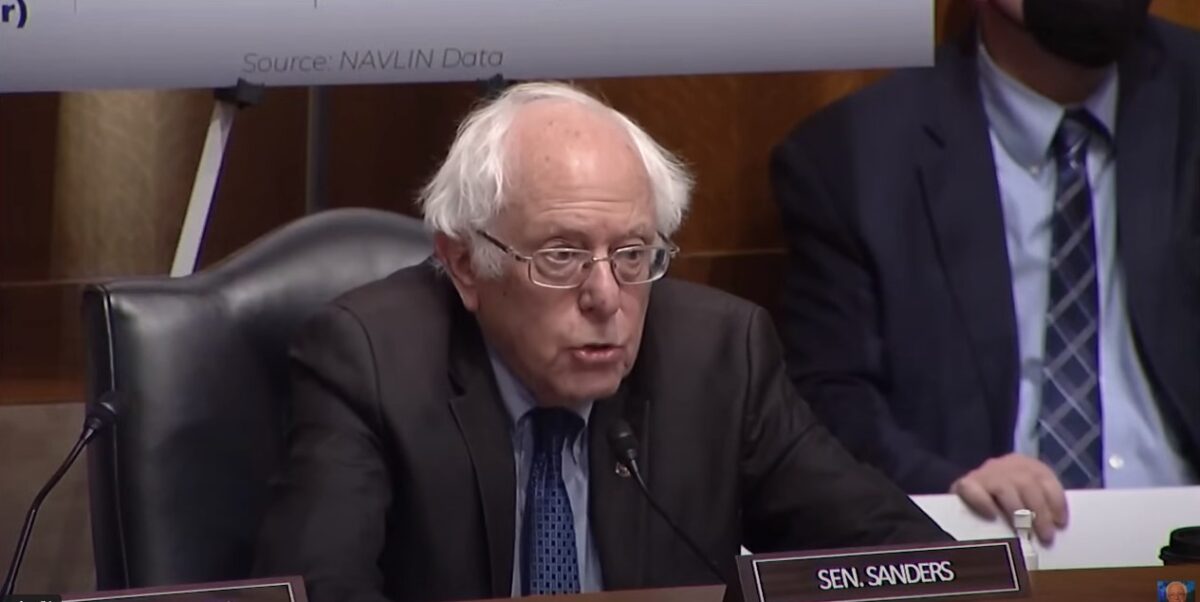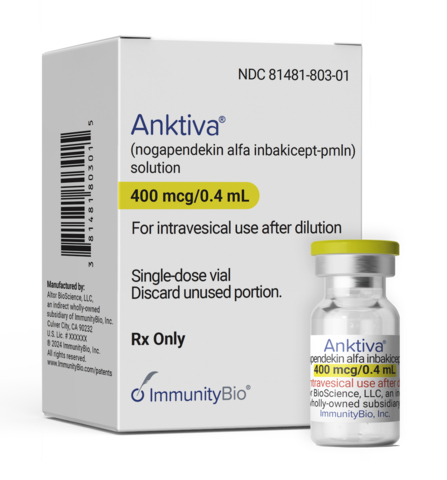The Centers for Medicare & Medicaid Services (CMS) announced the first ten drugs that will be entering Medicare drug price negotiations.
The drugs are covered under Part D of the Medicare program, which provides coverage for prescription drugs. Individuals insured under Medicare mainly include seniors 65 years of age and older.
The drugs were selected by the US Department of Health and Human Services (HHS) as part of US President Joe Biden’s Inflation Reduction Act (IRA), a historic law passed last year that includes reducing health care costs for patients by slashing the prices of some of the most expensive drugs.
In a statement announcing the drugs that are first up for price negotiations, HHS said that the Biden-Harris administration “has made lowering prescription drug costs and improving access to innovative therapies a key priority.”
This means people with Medicare will have access to important life-saving medications at lowered costs.
The inaugural list of drugs to enter the Medicare drug price negotiation program includes diabetes medications and blood thinners, with Pfizer and Bristol Myers Squibb’s (BMS) blood thinner Eliquis at the top of the list.
Together, the drugs totalled $50.5 billion in total gross covered prescription drug costs, which is about 20 percent gross covered prescription drug costs between June 1, 2022 and May 31, 2023 — this is the time period that was used to select which drugs were eligible for negotiation. The goal of the program is to save $25 billion per year on drugs by 2031.
Individuals with Medicare coverage paid a total of $3.4 billion in out-of-pocket costs in 2022 for the ten drugs chosen for price negotiations.
Related: J&J Sues US Government Over Medicare Drug Price Negotiations
“Today is the start of a new deal for patients,” Biden said at a White House event, adding that Americans often pay two to three times more than other countries for the same drugs.
The first ten drugs to undergo Medicare drug price negotiations were chosen based on criteria determined by Medicare, which include that they be sold in pharmacies, not have significant generic competition and have been on the market for at least nine years (13 years for more complex biologics).
Below are the ten drugs that will be up for price negotiations. Data for Medicare spend and total revenue are from June 2022 to May 2023. Source: White House and CMS — Factsheet: Medicare Drug Price Negotiation Program.
Eliquis (apixaban)
Maker: Pfizer and Bristol Myers Squibb
Treatment for: Blood clotting
Medicare Spend: $16.5 billion
Medicare enrollees who used drug: 3.7 million
Total Revenue 2022: $18.3 billion
Jardiance (empagliflozin)
Maker: Boehringer Ingelheim
Treatment for: Diabetes
Medicare Spend: $7.1 billion
Medicare enrollees who used drug: 1.6 million
Total Revenue 2022: $6.1 billion
Xarelto (rivaroxaban)
Maker: Johnson & Johnson
Treatment for: Blood clotting
Medicare Spend: $6 billion
Medicare enrollees who used drug: 1.3 million
Total Revenue 2022: $7.5 billion
Januvia (sitagliptin)
Maker: Merck
Treatment for: Diabetes
Medicare Spend: $4.1 billion
Medicare enrollees who used drug: 869K
Total Revenue 2022: $4.5 billion
Farxiga (dapagliflozin)
Maker: AstraZeneca
Treatment for: Diabetes
Medicare Spend: $3.3 billion
Medicare enrollees who used drug: 799K
Total Revenue 2022: $4.4 billion
Entresto (sacubitril/valsartan)
Maker: Novartis
Treatment for: Heart failure
Medicare Spend: $2.9 billion
Medicare enrollees who used drug: 587K
Total Revenue 2022: $4.6 billion
Enbrel (etanercept)
Maker: Amgen
Treatment for: Autoimmune conditions
Medicare Spend: $16.5 billion
Medicare enrollees who used drug: 48K
Total Revenue 2022: $4.1 billion
Imbruvica (ibrutinib)
Maker: AbbVie and Johnson & Johnson
Treatment for: Cancer
Medicare Spend: $2.7 billion
Medicare enrollees who used drug: 20K
Total Revenue 2022: $8.4 billion
Stelara (ustekinumab)
Maker: Johnson & Johnson
Treatment for: Psoriasis and arthritis
Medicare Spend: $2.6 billion
Medicare enrollees who used drug: 22K
Total Revenue 2022: $9.7 billion
Insulin Aspart
Maker: Novo Nordisk
Treatment for: Diabetes
Medicare Spend: $2.6 billion
Medicare enrollees who used drug: 777K
Total Revenue 2022: unavailable
How the Medicare Drug Price Negotiations Will Work
Price negotiations with participating drug companies will begin in 2023 and 2024 with new negotiated prices becoming effective beginning in 2026.
The companies have until October 2 this year to submit data and information on their drugs to CMS. The agency will meet with companies in the fall as part of the negotiations. By February 1, 2024, CMS will make an initial offer for each drug’s maximum price. Companies will then have 30 days to either accept the offer or make a counteroffer.
Companies will be able to have up to three negotiation meetings with CMS up until August 1, 2024.
Beginning in 2027 and 2028, 15 drugs will be added to the list every year until the 2031 target year at which point there will be a total of 100 drugs on the list.
Biden noted that Medicare pays twice as much for drugs than the US Department of Veterans Affairs, which already negotiates drug prices.
Once implemented, the prices on negotiated drugs will decrease for up to nine million seniors who currently pay as much as $6,497 in out-of-pocket costs per year for these prescriptions, Biden said.
The US Government Versus Big Pharma
“For far too long, pharmaceutical companies have made record profits while American families were saddled with record prices and unable to afford life-saving prescription drugs. But thanks to the landmark Inflation Reduction Act, we are closer to reaching President Biden’s goal of increasing availability and lowering prescription drug costs for all Americans,” said HHS Secretary Xavier Becerra.
“Although drug companies are attempting to block Medicare from being able to negotiate for better drug prices, we will not be deterred. The Biden-Harris Administration will continue working to ensure that Americans with Medicare have access to innovative, life-saving treatments at lower costs.”
Last month, Johnson & Johnson filed a lawsuit against the Medicare price negotiation plan. The company joined AstraZeneca, BMS, Novartis, Merck and Boehringer Ingelheim who filed their own lawsuits against the HHS earlier this year, claiming that the program violated their constitutional rights and would hinder innovation due to reduced revenues. Astellas Pharma was also part of the litigating pharma companies but withdrew its lawsuit last Thursday, as it managed to evade CMS’ initial negotiation list.
The negotiated prices of the first batch of drugs will be revealed in September 2024. The CMS will take factors like market life of the drug, revenue into account in its negotiations.
Analysts Predict Companies That Will Be Most Impacted by Medicare Drug Price Negotiations
Pfizer
According to a report from Moody’s Investors Service, despite an overall “mild” impact of price negotiations in the first year of negotiations, Pfizer and BMS’s blood thinner Eliquis will be among the most impacted by the price negotiations.
The drug accounted for $16.5 billion in Medicare Part D spending from June 2022 to May 2023. However, Pfizer and BMS listed the drug’s 2022 US sales to be $7.8 billion. The difference owes to significant rebates and discounts, according to Moody.
Eliquis sales account for nine percent of Pfizer’s total revenue in the US and eight percent for BMS.
Johnson & Johnson
With three drugs on the list accounting for 13 percent of its total 2022 sales, Johnson & Johnson will also feel the heat. It’s expected the biggest dent will come from immunosuppressant Stelara, which brought in $6.4 billion in the US for Johnson & Johnson, eight percent of the company’s total revenue. US sales of blood thinner Xarelto amounted to $2.5 billion in 2022 while cancer drug Imbruvica brought in $3.4 billion.
Amgen
Amgen’s Enbrel accounted for 15 percent of the company’s 2022 US sales, registering at $4 billion. Moody is predicting sales of the drug to decline in 2026 anyway due to incoming competition from newer immunology treatments.












Join or login to leave a comment
JOIN LOGIN